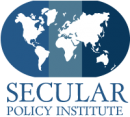Clash of the Titans: Science and Religion
History is marked by an ongoing series of clashes between scientific advances and religious doctrines. From the introduction of Aristotle’s Natural Philosophy through the scientific developments of Copernicus, Galilei, Newton, and Darwin, scientific discoveries have challenged prevailing religious orthodoxy,┬áeliciting responses ranging from modification to denial, and sanctions ranging from banishment, to excommunication. Nor are these ideological battles relegated to history, with contemporary expressions of these tensions still evident in debates regarding evolution, global warming, and stem cell research, among many other issues.
Key questions posed by recent researchers seek to explore the reciprocal impact of religious convictions and scientific advances and, critically, their impact on societal development and economic prosperity.┬á In an empirical study of the shifting tides of religious orthodoxy and scientific advances, Benabou, Ticchi and Vindigni (2013), have analyzed the interplay between science and religion over across time and place, and have come to a startling conclusion:┬á an evident and┬á”robust inverse relationship between religiosity and innovation” across the globe and over the course of history.┬á Their painstaking┬áempirical analysis appears in a paper titled, “Forbidden Fruits: The Political Economy of Science, Religion,┬áand Growth.”┬áSpecific examples of their thesis abound and, taken collectively,┬ámaterialize into┬áindisputable image of religion as having cobbled scientific advances and the march of humanity, even as science has given rise to the growing secularism that has continued to erode the foundations of religious orthodoxy.
The Lysenkoism associated with the Soviet Union between 1935 and 1964 serves as one vivid illustration of the impact of ideological orthodoxy on human advance.┬á During those decades, Inquisition-like methods, including┬ámandated denunciations, imprisonments and executions, were used as tactics to repress “bourgeois” scientific studies in evolutionary biology, agronomy, and other developing sciences.┬á Meanwhile, the Stalinist regime replaced scientific methods with ideologically driven pseudoscience more compatible with its prevailing dogma regarding society’s capacity for malleability and rapid social change.
Modern contraception serves as one contemporary proving ground for the ongoing clash between science and religion. Fundamental advances in human biology have given rise to contraceptive possibilities┬áthat directly challenge┬áchurch dogma.┬á Contraceptive advances have markedly enhanced societal productivity by allowing greater participation of women in the work force, but at the expense of a conflict with some of the world’s major religious doctrines and their convictions regarding the divinely ordered role of women, the purpose of sexuality, and the sanctity of the human body. The result is the condemnation by religious authorities that gradually loosens its grip on the advance of a society as society becomes progressively more secular across time.┬á The result, as┬áBenabou, Ticchi and Vindigni (2013)┬ápoint out, is an ongoing, two-way interaction between the dynamics of scientific thinking, on the one hand, and religious dogma on the other, with each making incursions into the territory of the other as they seek to stake a claim to fundamental truths that might support the evolution or salvation of an ever-changing society.
